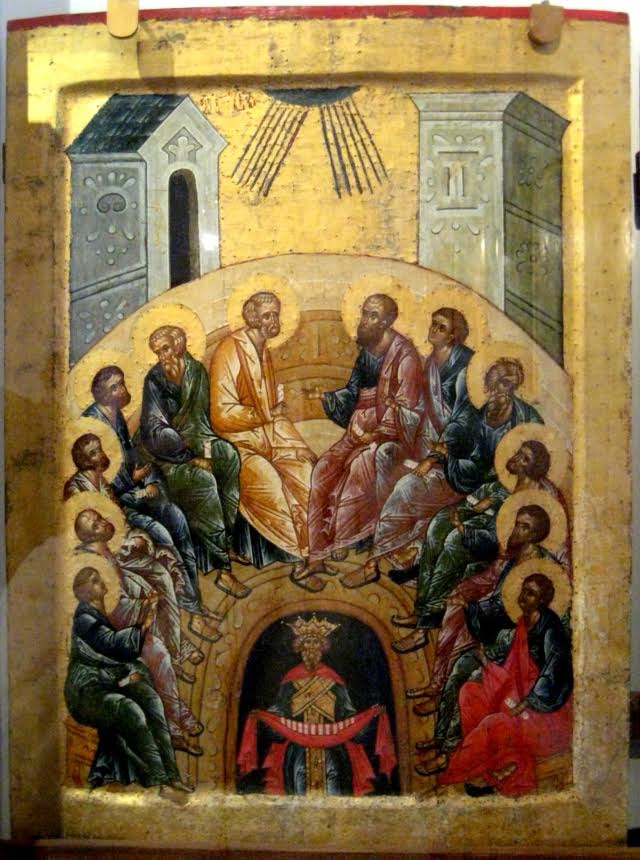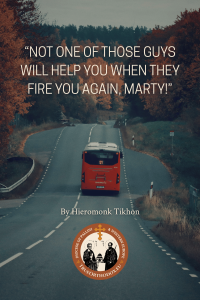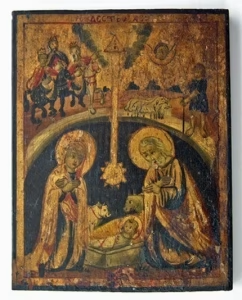Hypostasis in the True Orthodox Understanding of the Holy Trinity

Understanding of the Holy Trinity
- Nature and Persons of the Trinity
The doctrine of the Holy Trinity, central to Orthodox Christianity, holds that there is one God in three Persons: Father, Son,and Holy Spirit. These Persons are consubstantial (of the same essence or substance) and co-eternal, meaning that each Person of the Trinity is fully God, possessing all divine attributes, yet there is only one God.
- Theological Foundations
The True Orthodox Church relies heavily on the teachings of the Ecumenical Councils, particularly the First Council of Nicaea (325 AD) and the First Council of Constantinople (381 AD), which established the doctrine of the Orthodox Trinity. The Nicene-Constantinopolitan Creed (commonly known as the Nicene Creed) is a pivotal statement of faith, affirming the Trinitarian doctrine.
• Homoousios: The term used to describe the consubstantiality of the Son with the Father, meaning “of the same essence.”
• Procession of the Holy Spirit: The Holy Spirit proceeds from the Father alone, a point of distinction from the Roman Catholic Church’s doctrine of the Filioque (the Spirit proceeds from the Father and the Son).
Significance in the Faith
- Foundation of Christian Life and Worship
The Holy Trinity is central to every aspect of True Orthodox life and worship. The liturgy, prayers, and sacraments are all deeply Trinitarian. The invocation of the Trinity is frequent in services, emphasizing the unity and co-operation of the three Persons in the divine economy of salvation.
• Baptism: Administered in the name of the Father, Son, and Holy Spirit, signifying initiation into the life of the Trinity.
• Eucharist: Celebrated as a Trinitarian act, with the epiclesis (invocation of the Holy Spirit) being a critical moment in the consecration of the elements.
Definition of Hypostasis
In Trinitarian theology, the term “hypostasis” (Greek: ὑπόστασις) refers to the distinct, individual reality or person of each member of the Holy Trinity. While “ousia” (essence or substance) denotes the single, shared divine nature, “hypostasis” signifies the three distinct persons: the Father, the Son, and the Holy Spirit. This distinction is crucial for understanding how the three Persons are both one God and yet distinct from one another.
Historical Development
The terminology and conceptual clarity regarding hypostasis and ousia were significantly developed during the early Ecumenical Councils, particularly at the First Council of Nicaea (325 AD) and the First Council of Constantinople (381 AD). The Cappadocian Fathers, especially St. Basil the Great, St. Gregory of Nyssa, and St. Gregory Nazianzus, played a vital role in articulating the distinction between hypostasis and ousia, ensuring the orthodox understanding of the Trinity.
The Three Hypostases
- The Father: The Father is the source and origin of the Godhead, often referred to as the “unbegotten.” He is the principle without principle (arche anarchos), meaning He has no origin and is not derived from any other source.
- The Son (our Lord Jesus Christ): The Son is eternally begotten of the Father. This means that His existence is derived from the Father, but this begetting is an eternal and timeless act. The Son shares the same divine essence as the Father but is a distinct hypostasis.
- The Holy Spirit: The Holy Spirit proceeds from the Father (as affirmed in the original Nicene-Constantinopolitan Creed). The procession is an eternal relationship distinct from begetting, ensuring that the Spirit is also consubstantial with the Father and the Son but is a distinct hypostasis.
Hypostasis and Personhood
In the context of the Trinity, “hypostasis” can be understood as equivalent to “person,” but with specific theological nuances that emphasize the distinct individual realities within the unity of the Godhead. Each hypostasis possesses the fullness of the divine essence, but they are not three gods; rather, they are three persons in one God.
Theological Implications
- Unity and Diversity in the Godhead: The doctrine of the hypostases ensures that the unity of God is maintained without collapsing the distinct personal realities of the Father, Son, and Holy Spirit. This balance is fundamental to the orthodox Christian understanding of the Trinity.
- Role in Creation and Salvation: Each hypostasis has a distinct role in the economy of salvation:
- The Father creates and sends.
- The Son is incarnate, redeems, and reveals the Father.
- The Holy Spirit sanctifies, indwells believers, and guides the Church.
- Liturgical and Spiritual Life: The True Orthodox Church’s liturgical practices and prayers often emphasize the distinct roles of each hypostasis while worshiping the one Triune God. For example, in the Divine Liturgy, specific prayers are directed to the Father, through the Son, and in the Holy Spirit, reflecting their unique yet united actions.
Mystical and Experiential Knowledge
In True Orthodox spirituality, knowledge of the hypostases is not merely intellectual but deeply experiential and mystical. The concept of theosis (divinization) involves entering into a relationship with each Person of the Trinity, experiencing their distinct energies and operations in the life of the believer.
- Hesychasm: This mystical tradition particularly emphasizes encountering the uncreated energies of God, which are accessible through the Holy Spirit. The Jesus Prayer and other ascetic practices aim to purify the believer, enabling a deeper communion with each hypostasis of the Trinity.
Conclusion
The True Orthodox understanding of the Holy Trinity, with its nuanced doctrine of hypostasis, preserves the delicate balance of unity and diversity within the Godhead. This understanding is not only a theological cornerstone but also a profound guide for worship, prayer, and the spiritual life of believers. It affirms that while God is one in essence, He is also three distinct Persons, each playing a
unique role in the divine economy and the believer’s journey towards union with God.




